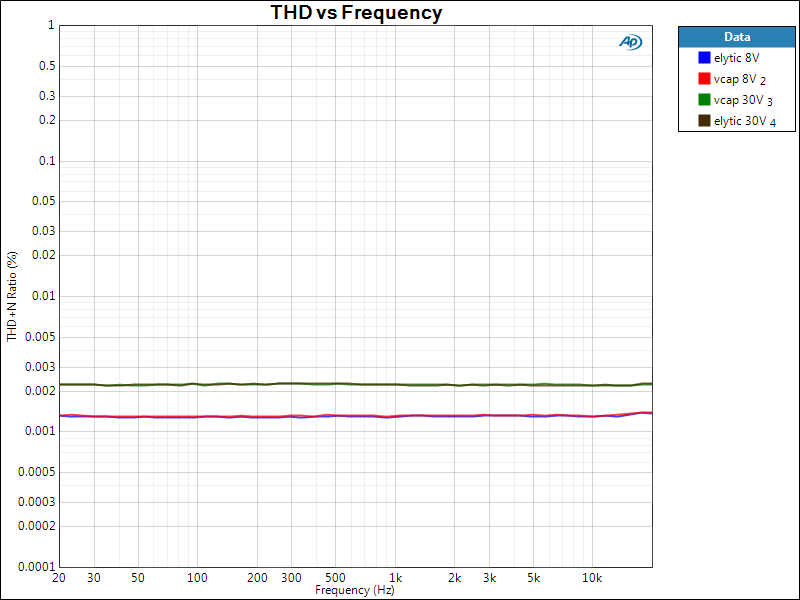In recent correspondence with Jan Didden, the question came up about the effects of voltage on coupling cap performance. So, pressing into service the wonderful APx1701 interface (which contains two power amps), I ran the same experiment as in Part 1, but looked at THD versus frequency at two voltage levels, 8V and 30V RMS. NB: This is the drive voltage level, not the voltage across the cap. If you have 30V across a cap at audio frequencies, it’s a filter cap, not a coupling cap. The scope of these experiments is to demonstrate coupling cap performance.
Note that as before, the difference between the super expensive Teflon dielectric cap and the 25 cent pair of electrolytics at each of those voltage levels is 67% of fuck all. So no difference in distortion, frequency response, distortion versus frequency, response to complex signals… nothing, exactly as the boring old voltage divider equation predicts. If someone claims to you that they hear a difference in a coupling application (absent a pathological design), and as usual no real evidence of audibility is given, it’s pretty safe to rack that belief up to sociology rather than audibility.
Bring some evidence, not claims and excuses.


You make me smile,…
Note: missing from this is a circuit diagram
showing the test setup,…
Dan
I hope it was clear from the prose- I just connected the caps from input to output of the AP, with the AP’s input impedance set at 100k.
SY,
Good to read something from your hand, has been a while. You are missed at DIY.
Vac
You can always read my dribblings at AudioXpress, who have been kind enough to publish me almost monthly.
LOL at ” 67% of fuck all,” and of course I agree. Good job Stuart.